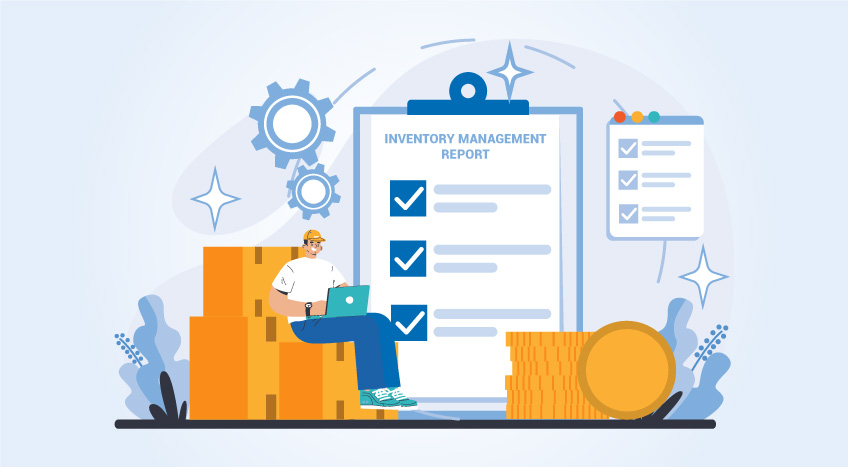The tricky curveballs of running a small business in a globalized world can be overwhelming. While a small business does not have the power to single-handedly influence the market dynamics, the highly dynamic market forces can easily augment the order, operations, costs, revenue and hence profits of a small business. In trying times, like an impending recession, a market slump, or a reduction in the stock market valuation, it is normal for businesses, especially small and medium-sized ones to go for cost control. The first and foremost strategy that comes into mind is the reduction in labor costs. While firing employees or team members may look like a quick fix to reduce labor costs, such a step might cause long-term repercussions.
In this blog, we will help you with tips to reduce labor costs effectively without causing any long-term adverse effects or any knee-jerk reaction in the business order and operations.
A brief on labor costs
To put it in simple terms, labor costs are the total compensation or remuneration that a business or an organisation pays to its employees. It includes the salaries or wages, any benefits or perks and the payroll taxes that the business incurs. It is the cost of employing an individual for his/her skills, services and designated role.
Labor costs can be classified in two ways. One is fixed cost and variable cost. Fixed costs as the name suggests do not change based on the operations of your business. It is the wages that you have committed to your employees. Variable labor costs, on the other hand, vary as per the production, demand, sales, market trends and so on.
Labor costs can also be classified as direct costs and indirect costs. Salary payment to an employee is a direct labor cost whereas payment made to a service provider for training and development will be considered an indirect cost.
Basically, the higher the labor costs, the lower will be the available budget for other operations and activities.
Need to reduce labor costs
For a small business, it is extremely important to reduce labor costs, especially during challenging economic trends. To increase revenue and hence profits, every now and then businesses have to engage in cost control in the form of labor cost cuts. Additionally, by opting to reduce labor costs, businesses can increase investments, and further accelerate research and development. It also helps in higher retained earnings for the business, which is a crucial need for small and medium businesses. With reduced labor costs, businesses can employ better and upgraded processes and technology as well, which in turn can augment productivity and efficiency.
4 important tips to reduce labor costs
With thoughtful decision-making, small businesses can do cost control by cutting labor costs without compromising on the productivity, efficacy or even morale of the employees. Here are some tips to reduce labor costs effectively –
Optimal management of working hours and schedules
As a small business owner, your first step towards cost control in terms of labor costs is to accurately and appropriately manage and lay down the working hours. It is of no use to keep long working hours that do not drive productivity after a certain limit. Instead, optimise the working schedules of your employees such that they give their best during their working hours. Keep the working schedules relatively low and reap the benefit of high productivity and corresponding reduced labor costs.
Augment workplace efficiency
More often than not, your business does not require direct labor cost cuts but instead requires a more congenial workplace environment that augments efficacy and productivity. In challenging times, it becomes even more important to enhance workplace efficiency, so that the time taken by your team or employees to complete their duties is well-optimized. As and when tasks are completed faster, the working hours are reduced and so does labor costs.
Take care of the turnover rate
One of the primary ways to reduce labor costs is to manage the turnover rate. Hiring a new employee, even at a relatively lower labor cost in aggregate can become much more cost-inducive. Retaining an experienced employee is way more beneficial both in terms of cost control and productivity than making a new hire and training them for the concerned role.
Adapt to flexible working hours and avoid overtime
It is no business secret, that when an employee works overtime, he/she has to be compensated for the same. As a small business, that is looking to reduce labor costs, you should make a strategic decision of ensuring that your employees do not have to work overtime. Furthermore, allow flexible working hours to your employees. Flexibility in working hours allows employees the choice as per their capacity and is proven to drive better productivity, which can further help in reducing working hours.
Bottom line
As a small business, that is trying to do effective cost control, you can save significantly on labor costs. For that, you don’t have to fire your staff or cut your employee strength. All you have to do is a thoughtful analysis of the current employment order, do some regular check-ins, and make some changes in the working schedules and you will be able to reduce labor costs without any harsh decision-making.










